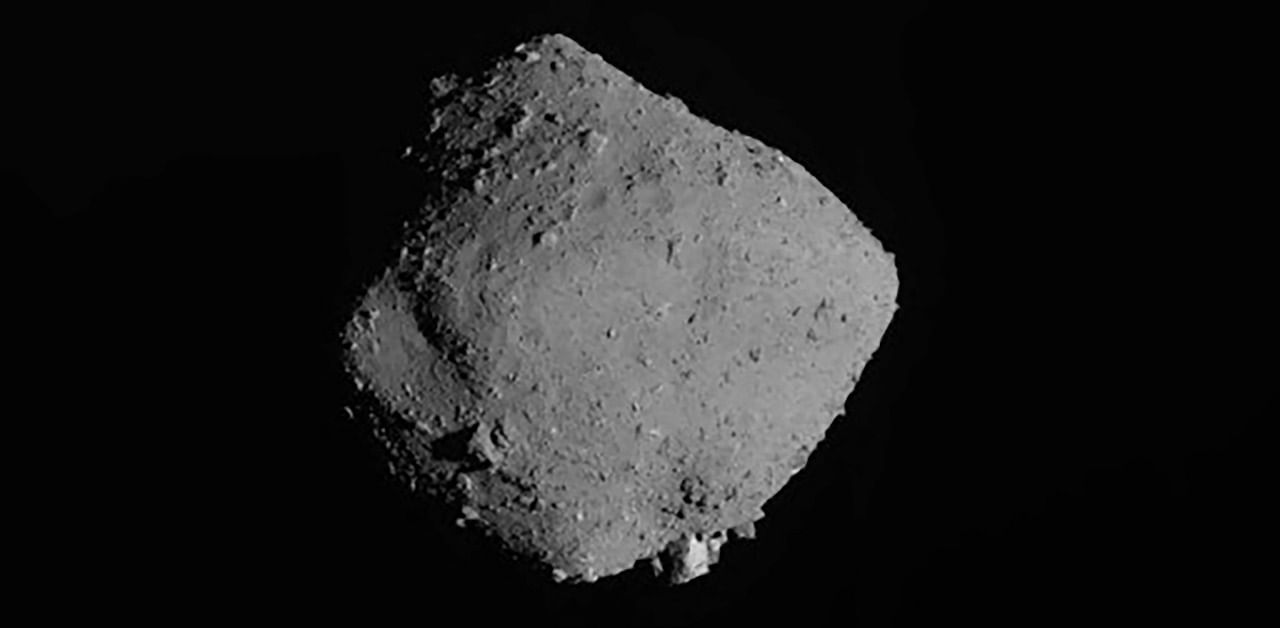Why should we explore asteroids?
Recently, Japan's Hayabusa 2 spacecraft returned with soil samples from an asteroid called Ryugu. Previously in 2010 its predecessor mission visited another asteroid called Itokawa and scooped up some surface dust. Meanwhile, Nasa's OSIRIS-Rex is targeting another asteroid called Bennu.
Why are space agencies investing millions in exploring asteroids? It turns out there are strong reasons. In the primitive stages, when the solar system was being born, a giant disc swirled around the solar nebula carrying with its gases, dust and rocks. The rocks collided and fused forming planets, yet others became their moons. The remaining rocks crashed and broke into smaller irregularly-shaped bits. Asteroids are these leftover bits of the rocks.
Over time, the planets underwent several changes. In contrast, the asteroids remained unchanged, indicating that their material is in pristine form from the ancient past.
Astronomers believe that many terrestrial elements and life-forming chemicals like water, carbon and oxygen were transported to earth via asteroids. By analysing the soil samples, they can unravel these hidden mysteries.
To cite an example, Itokawa has a metallic composition. However, scientists were surprised to find water-laden minerals in its soil samples. These findings posit that water could have been present in the parent rock from which the asteroid broke away, and the surface water percolated deeper into its soil. Despite harsh radiation exposure, the water remained preserved.
Carbon is a vital life-source element. Scientists are curious to find out if asteroids could have brought the early signatures of life on to earth as well.
Dr John Bridges from Leicester university analysed a few soil grains from Itokawa and now looks forward to testing the Ryugu soil. He writes that: "Were the building blocks for life present in the nebula or did they develop later on earth? If they were present in the nebula, we might be able to see them on Ryugu. Previous research has suggested that reactions with water on asteroids are linked to the production of amino acids, which make up proteins. If we did find that the building blocks of life were present at the time that earth was born, this could mean life may be more common in the universe that you may think. It may also help us work how organic material spread to planets, such as Mars and Earth."
There is another facet of asteroids that interest astronomers. Some of them come crashing down and can be potentially dangerous to life on earth (such as one that could have wiped out the dinosaurs).
Many of the space rocks whizz by the earth's orbit or vaporise in the earth's atmosphere - most of the time, they are sand grain-sized and hardly noticeable. However, those that are tough and more significant pass through the atmosphere, and come down as blazing fireballs called meteorites. Their impact can be catastrophic for us. Astronomers want to prevent that from happening.
NASA's OSIRIS_REx probe is exploring an asteroid called Bennu which can be potentially dangerous to earth in the 22nd century. The spacecraft is following Bennu's path closely, and today, scientists can predict the exact direction Bennu will take in 2135.
However, presently Nasa has a different task at hand: to divert the orbit of another asteroid.
To this end, NASA is building a defence spacecraft called DART (Double Asteroid Redirection Test). The agency states that "This defence-driven spacecraft is a test of technologies for preventing an impact on the earth by a hazardous asteroid. it will demonstrate its prowess on an asteroid duo called Didymos and its moonlet Dimorphos."
DART will intercept this binary in mid-2022 and will deliberately crash into the surface of Dimorphos. This calculated high-speed impact will create a small kinetic momentum that will change the speed of the moonlet by a tiny fraction of one per cent. This push will translate into several minutes of orbital period change for Dimorphos, thereby nudging it on a slightly different course.
Apart from these immediate ventures, the future will witness asteroid mining to extract their mineral wealth for commercial purposes. At the same time, deep space missions will use the asteroids as stopovers and refuelling hubs.
(The writer is a science communicator)
